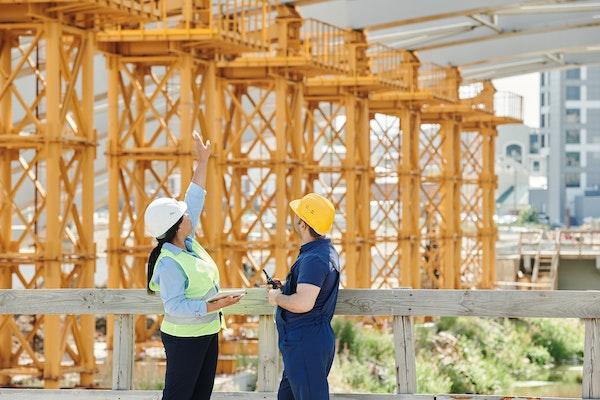With technological advancements, 360-degree photography has emerged as a valuable tool for construction site documentation. It offers a comprehensive site view, allowing stakeholders to have a virtual site tour from their computer or smartphone. Here we will discuss tips and tricks for 360-degree photography for construction site capture.
What is 360 Degree Photography?
360-degree photography is a technique used to capture a complete view of the surroundings by taking multiple photos and stitching them together to create a panoramic view. It allows the viewer to see every angle of the environment, including up and down, left and right. The technique is used extensively in various industries, including real estate, tourism, and construction.
Benefits of 360 Degree Photography in Construction Site
360-degree photography has numerous benefits in construction site documentation. Some of them are:
1. Comprehensive Documentation
360-degree photography offers a complete view of the construction site, capturing every detail of the environment. It helps in better documentation and monitoring of the project’s progress.
2. Improved Communication
The 360-degree photos can be shared with stakeholders, such as architects, engineers, and clients, to give them a better understanding of the construction site’s progress. It facilitates improved communication and collaboration among team members.
3. Time and Cost Savings
360-degree photography can help save time and costs associated with site visits. Stakeholders can have a virtual site tour, reducing the need for physical visits.
Tips and Tricks for Using 360 Degree Photography on Construction Site
Construction sites are a dynamic and ever-changing environment, with numerous tasks simultaneously. Documentation of construction progress is essential to ensure that the project is on schedule and all stakeholders are updated.
1. Choose the Right Camera
The right camera is crucial for capturing high-quality 360-degree photos. Some of the factors to consider when choosing a camera are:
•High resolution: The camera should have a high resolution to capture every detail of the environment.
•Wide-angle lens: A wide-angle lens is essential to capture a complete view of the surroundings.
•Automatic stitching: The camera should have an automatic stitching feature to stitch multiple photos together seamlessly.
2. Plan the Shots
Planning the shots is essential for capturing high-quality 360-degree photos. Some of the factors to consider when planning the photographs are:
•Lighting: The lighting should be optimal to capture high-quality photos. Avoid shooting in direct sunlight or low light conditions.
•Location: Choose a location that offers a comprehensive site view, including all angles.
•Time: Choose the right time of the day to capture the shots. Early morning or late evening is the best time to capture high-quality photos.
3. Use a Tripod
A tripod is essential to capture stable, high-quality 360-degree photos. It ensures the camera is steady and reduces the chances of blurry images.
4. Edit the Photos
Editing the photos is crucial to ensure high-quality final output. Some of the editing techniques to consider are:
•Color correction: Adjust the colors to ensure that they are accurate.
•Image sharpening: Sharpen the image to enhance the details.
•Removing distortion: Remove any distortion caused by the wide-angle lens.
5. Choose the Right Platform
Choosing the right platform to share 360-degree photos is crucial. Some of the popular media to consider are:
•Matterport: Matterport is a popular platform for creating virtual construction site tours.
•Google Street View: Google Street View is a free platform that allows users to upload 360-degree photos of locations.
• Kuula: This is a platform designed specifically for 360-degree photos and virtual tours. It is a user-friendly platform that allows users to upload their 360-degree photos and create virtual tours, which can be shared with others online.
Bottom Line
360-degree photography is an innovative tool that has revolutionized the way construction site documentation is done. It allows for a comprehensive view of the site, making it easier for stakeholders to assess the project’s progress, identify issues, and make informed decisions. As discussed, capturing high-quality 360-degree photos requires careful planning and execution, but it can be done successfully with the right equipment and techniques.

